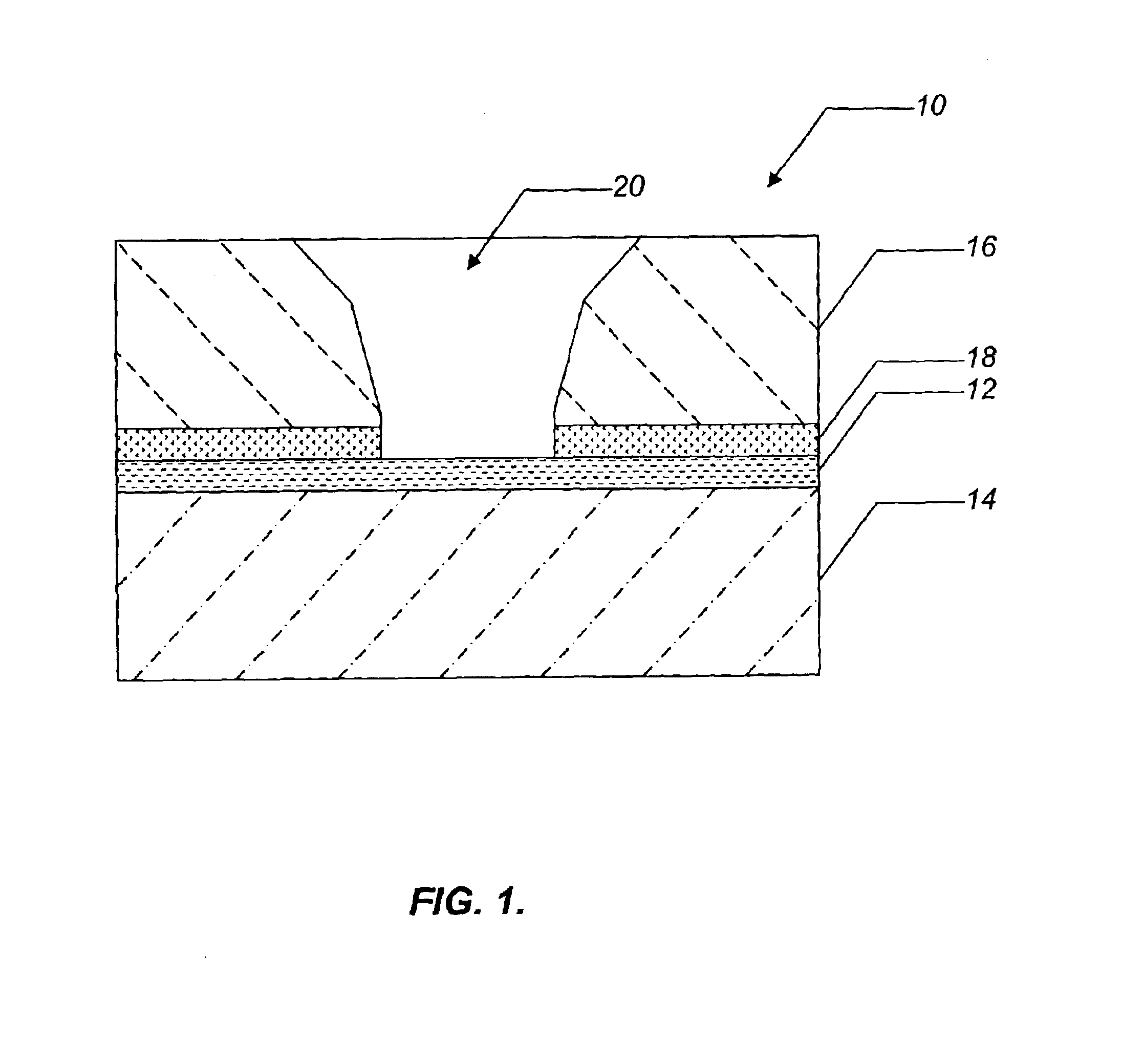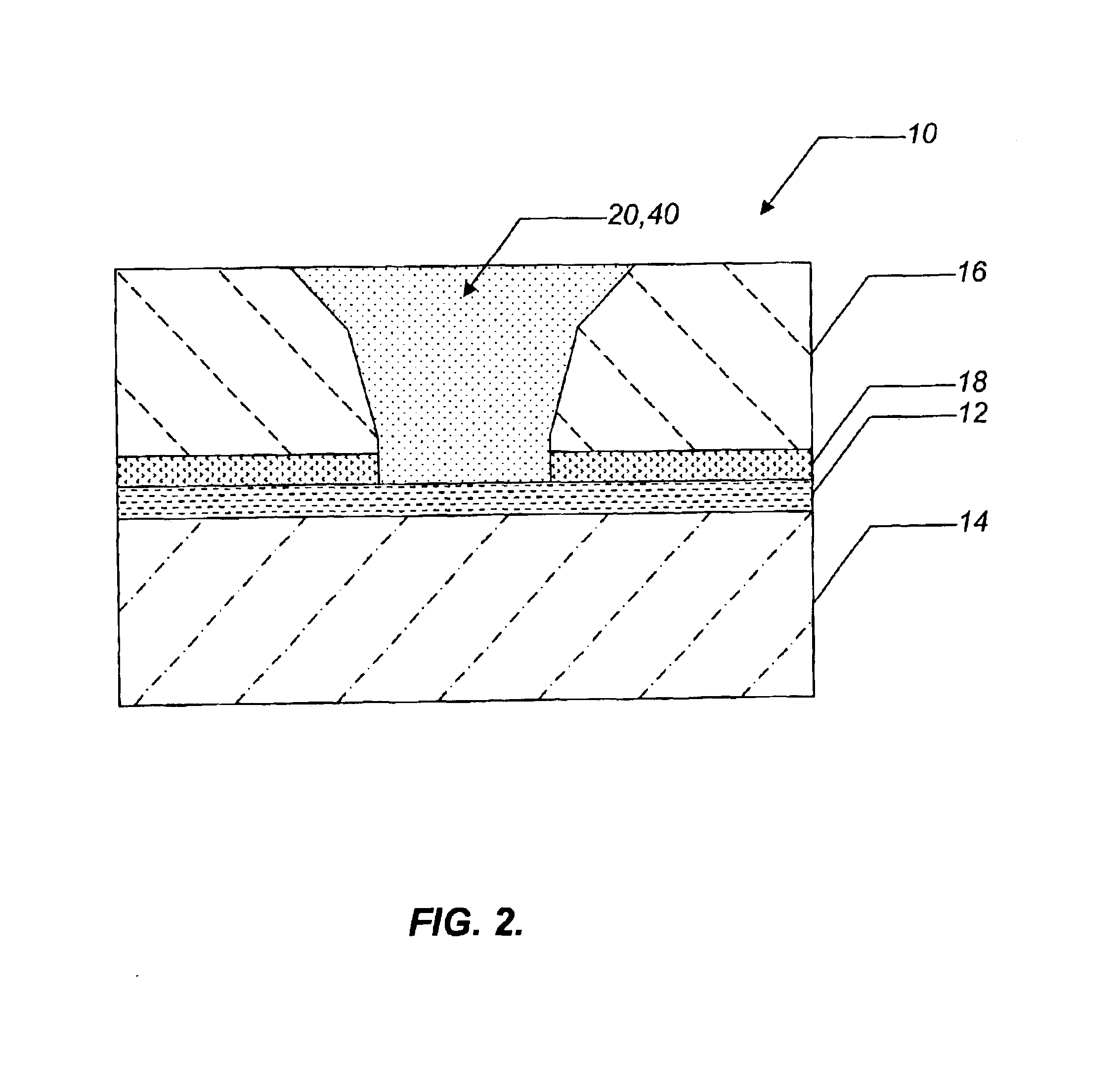In-situ method and composition for repairing a thermal barrier coating
a thermal barrier and in-situ technology, applied in the field of thermal barrier coatings, can solve the problems of high temperature corresponding increase in the durability of the components of the turbine, and insufficient mechanical properties, etc., to achieve the effect of avoiding disassembly, masking and over-spraying problems
- Summary
- Abstract
- Description
- Claims
- Application Information
AI Technical Summary
Benefits of technology
Problems solved by technology
Method used
Image
Examples
Embodiment Construction
The present invention is directed to components protected by thermal barrier coatings (TBCs) for operation within environments characterized by relatively high temperatures, and therefore subjected to severe thermal stresses. Such components include those used in gas turbine engines and the like.
Referring to FIG. 1, a typical TBC system 10 includes a bond coating 12 deposited on the surface of a component 14. A ceramic layer 16 is deposited on the surface of the bond coating 12 and acts as the TBC. The component 14 may be formed from a nickel, cobalt or iron-based superalloy or the like. The bond coating 12 may be formed from a metallic oxidation-resistant material, so as to protect the underlying component 14 from oxidation and enable the ceramic layer 16 to more effectively adhere to the component 14. Suitable bond coatings 12 include MCrAlX overlay coatings (where M is iron, nickel and / or cobalt and X is yttrium or another rare earth element) and diffusion aluminide coatings. Fol...
PUM
| Property | Measurement | Unit |
|---|---|---|
| temperature | aaaaa | aaaaa |
| diameter | aaaaa | aaaaa |
| diameter | aaaaa | aaaaa |
Abstract
Description
Claims
Application Information
 Login to View More
Login to View More - R&D
- Intellectual Property
- Life Sciences
- Materials
- Tech Scout
- Unparalleled Data Quality
- Higher Quality Content
- 60% Fewer Hallucinations
Browse by: Latest US Patents, China's latest patents, Technical Efficacy Thesaurus, Application Domain, Technology Topic, Popular Technical Reports.
© 2025 PatSnap. All rights reserved.Legal|Privacy policy|Modern Slavery Act Transparency Statement|Sitemap|About US| Contact US: help@patsnap.com



